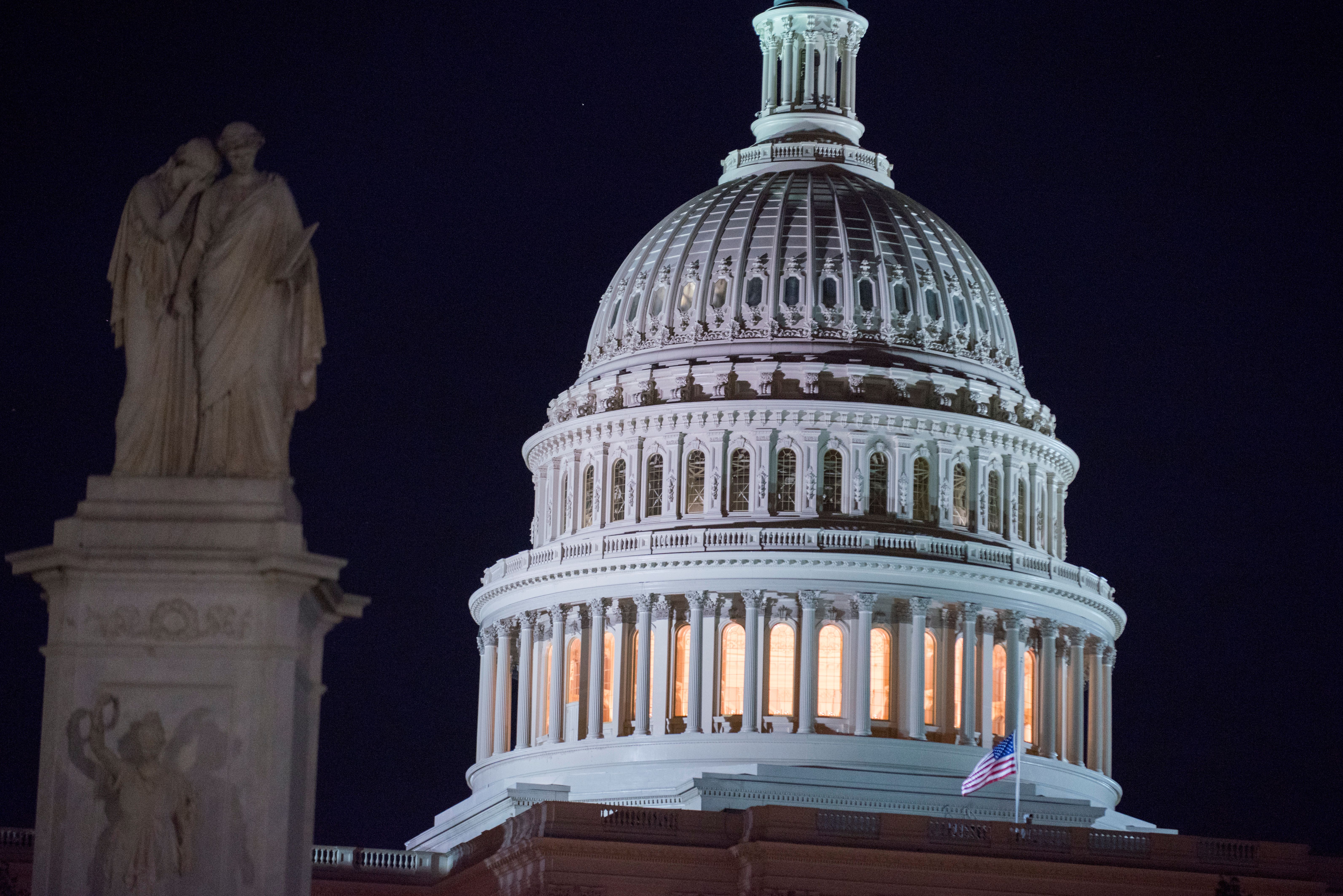Midterms 2018: Control of Congress, Trump agenda in balance
Control of the US Congress is at stake when Americans go to the polls for midterm elections in November (Eric BARADAT)
Washington (AFP) – Do Americans support the Republicans shepherding Donald Trump’s policies through Congress? Or do they want Democrats to reclaim the House and Senate and block the controversial president’s agenda?
These are the main political questions to be answered in just a month, when US voters pick the representatives they want to send to Washington and to state legislatures, as well as the governors of three dozen states.
With polls consistently showing a Democratic advantage, Senate Majority Leader Mitch McConnell has likened his Republican party’s efforts to hold onto its majority to a “knife fight in an alley.”
Several political experts are talking about a possible “wave election” — a term used to describe a party making major gains in either the House or Senate, or both.
History suggests it could be a big Democratic year, as the party controlling the White House often loses seats in Congress two years after a president takes office.
– What are the midterms? –
US midterm elections occur halfway through a president’s four-year term, when the president himself is not on the ballot.
Election Day this year is November 6, although nearly all 50 US states allow some form of early voting.
All 435 seats in the House of Representatives are up for grabs every two years.
In the 100-member Senate, terms last six years, and 35 seats are up in November.
Republicans currently hold a 236-193 advantage in the House, and a 51-49 Senate edge.
Democrats would need to gain an additional 25 seats to reclaim the House.
A two-seat Senate gain would give Democrats control in that chamber, but this year’s Senate electoral map is particularly challenging, as Democrats are defending 26 seats compared to just nine for Republicans.
– What’s at stake? –
The election’s impact could be monumental, beyond just whether Congress will support or impede Trump’s agenda.
Should Democrats flip the House, the likelihood of impeachment proceedings against Trump would increase dramatically.
Investigations into Trump’s administration, including the probe about his campaign possibly colluding with Russia, would intensify.
Committee chairmanships shifting to the Democrats could result in a new round of subpoenas.
And Democratic control of the Senate, which votes on the president’s nominees, would make it harder for Trump to get any new picks onto the Supreme Court should a vacancy occur.
– Is Trump a factor? –
Absolutely. Although the president is not on the ballot, many Americans see the midterm elections as a referendum on Trump.
In conservative states like Kansas or South Carolina, there is little reason for Republican candidates to distance themselves from Trump, as he remains relatively popular there despite high overall disapproval numbers.
In battleground congressional districts, Republicans may focus more on strong economic growth than on Trump, while Democrats could highlight his controversial immigration, health care and trade policies.
It’s a strategic balancing act, said Matt Mackowiak, a Republican consultant in Austin, Texas.
“The challenge Republicans have is, you need Trump to fire up the base,” he said. “But the more he does that, the more risk there is potentially with suburban white women and independent voters.”
Disclaimer: This story has not been edited by Siliconeer and is published from a syndicated feed. Siliconeer does not assume any liability for the above story. Validity of the above story is for 7 Days from original date of publishing. Content copyright AFP.


